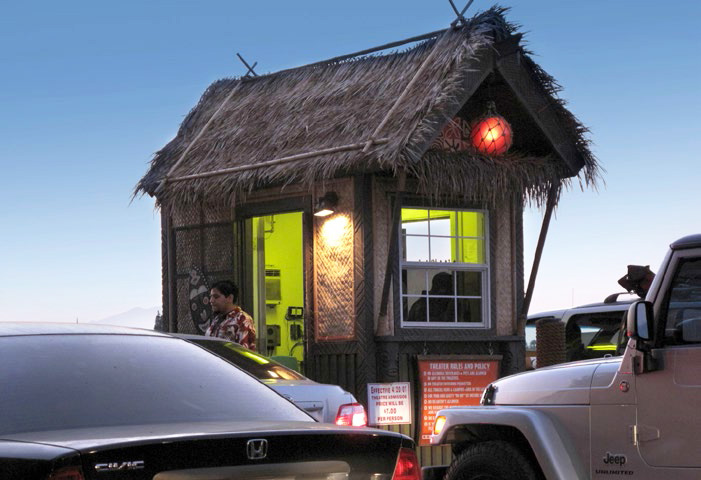Showtime in the Ozone - Page 3
 |
 |
|
|
 |
|
|
The last picture shows?
At their peak, closing in on 1960, approximately one out of every four movie theaters in America was a drive-in. However, the late part of the 20th century was not kind to the genre.
"There's a few things that sort of killed the drive-in," says Maniscalco. He cites the time change accompanying the spreading adoption in the U.S. of daylight saving time, in 1966 and then 1987, as one problem: "It's not like we can just make the world go dark."
"One was television in general," adds Corcoran, which he admits affected all theaters, from the 1950s at least until the rise of multiplexes in the '80s. Another factor, he says, was the nationwide expansion from the inner city to the suburbs, a transition that impacted rural locations that had traditionally been available for siting drive-ins.
"A lot of the land that drive-in theaters were built on suddenly became very, very valuable," points out the industry spokesman.
"When gas prices went up, the size of cars went down. That killed it," chipped in Stu Megaw, who is such a fan of the open-air venues that he travels around to see drive-ins he hasn't visited before. He even donated time for several years as volunteer publicist for the United Drive-In Theater Owners Association.
Using the lots for swap meets and flea markets by day helped keep several theaters open, or at least still standing and ready for possible reopening.
Happily, even as the number of drive-ins plummeted by 2010 to one for every 50 theaters, their legend loomed larger. One reason was actually a limitation: Because of the movie studios' control of the industry in mid-century, the first four decades of drive-ins hosted only B-movies, not big star, first-run pictures.
This limitation became as big a chapter in drive-in lore as couples making out, elevated to hyperbole in recent decades by comedic film critic Joe Bob Briggs (aka John Irving Bloom).
Besides the 'grindhouse' style of violent (for the time) exploitation films, some drive-ins resorted to showing pornography. And although the fear of open-air 'skin flicks' causing car crashes was just urban myth, that didn't stop local authorities from demanding a pricey, 12-foot-high fence around the San Jose Drive-In.
The B-film environment also wrought unusual careers, including that of Bob Lippert of Alameda, who owned a string of 23 drive-ins stretching from Oregon to San Diego and, during the 1940s and '50s, produced 175 pulp-fiction films to air at them.
There is no doubt that drive-in architecture is iconic of mid-century America, for several reasons. Regionally proud murals on the back of huge screens was no small thing in those days, becoming landmarks in places like the Mission Drive-In in San Juan Capistrano and the Fiesta 4 Drive-In in Pico Rivera. Movie directors recognized the striking visual of outsized, outdoor screens, using them as sets in films like 'Twister,' 'Heat,' and a Boris Karloff-Peter Bogdanovich movie called 'Targets.'
"I'm a big fan of the Mission Tiki because they've got a theme: it's like a big tiki bar," Megaw says of a four-screen open-air site in Montclair, stylishly remodeled for its semicentennial in 2006.
Possibly the best use of a drive-in of all time was dreamed up by Warner Bros. publicist Marty Weiser, who booked the Pickwick Drive-In in Burbank one night in 1974 for a 'horses only' premiere of Mel Brooks' classic western spoof, 'Blazing Saddles.' With riders trotting over from nearby Griffith Park stables, the place was packed from head to tail.
Raymond Syufy, Sr., worked in a walk-in theater as a teen, and then started his business career owning the Vallejo Auto Movies. The company, now run by his sons, is parent to the West Wind Drive-In chain of seven theaters in the Western states, four in California. Maniscalco said architect Vincent Rainey "designed several of our round buildings" that house snack bars, including the Solano 2 in Concord in 1967.
"I've always wanted to paint our buildings chrome [colored]—just own it, the spaceship look," the spokesman admits with a smile.




